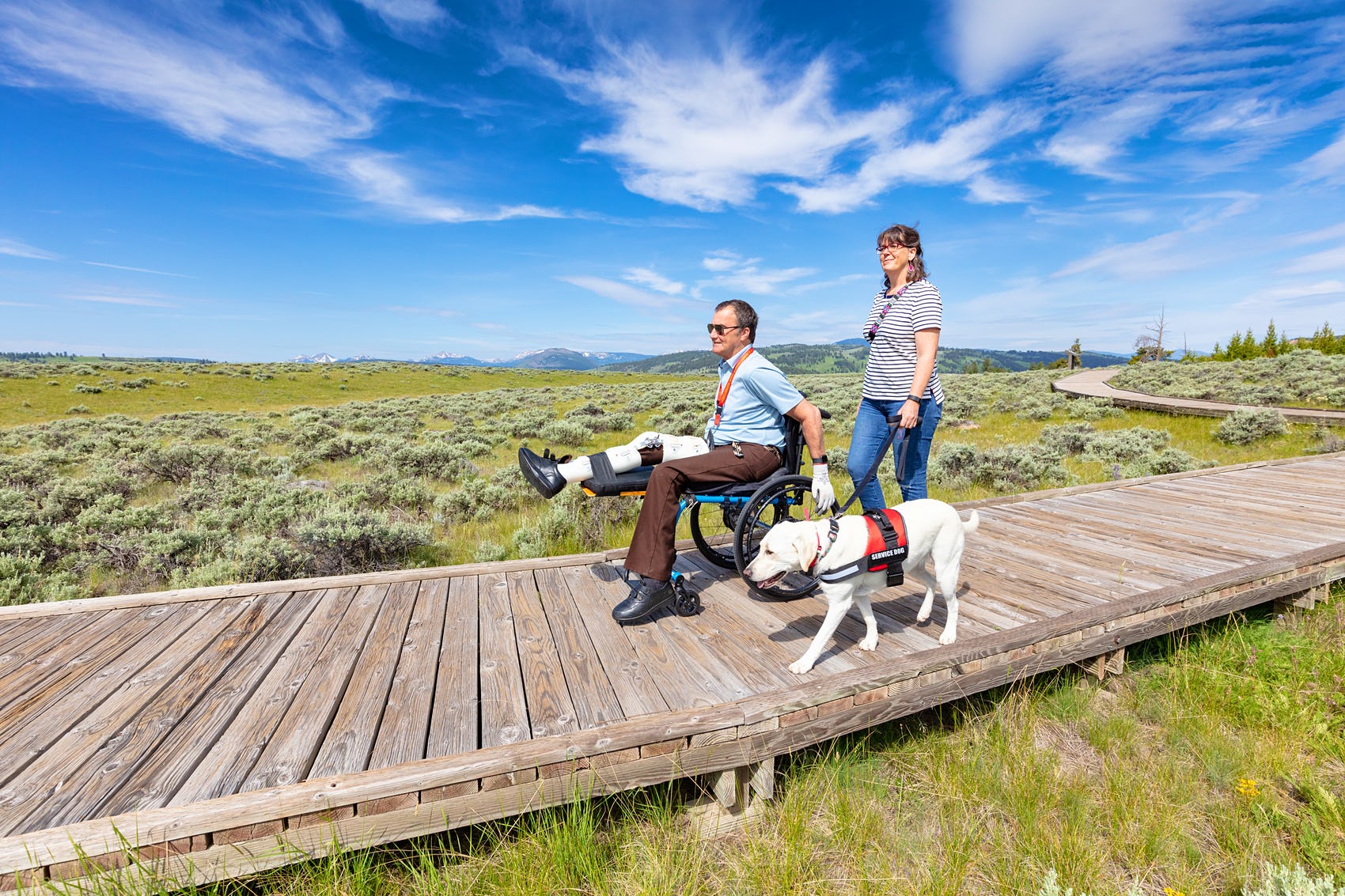Planning a Visit to Accessible National Parks

By Rosie Wolf Williams For Health Archives | Next Avenue
A little online research and a few phone calls can prepare you for a fulfilling trip.
Kristin Secor has a love for travel, and regularly visits national parks across the country. But Secor was born with a rare form of muscular dystrophy that affects her muscle strength and mobility, among other issues. She also has scoliosis and is on a ventilator to assist with her breathing. So she uses a wheelchair or a mobility scooter when she is away from home.
Despite her physical limitations, Secor finds ways to travel and enjoy the outdoors. On her blog, World on Wheels, she encourages people with disabilities to travel by offering resources and recounting her own experiences, including her trips to National Parks.
“Using the tracked chair gave me a sense of freedom and independence that I hadn’t been able to experience in a long time.”
“These beautiful places allow you to reconnect with various types of nature and can even provide unique opportunities or experiences. I miss being able to hike to some of the incredible views and just being able to be in the middle of the woods,” says Secor.
When she visited Sleeping Bear National Lakeshore in Northern Michigan, a free local program allowed her to use an all-terrain chair with bulldozer-like tracks to go on a two-mile hike through the woods and up a hill so she could enjoy views of Lake Michigan.
“This hike is something that would not have been possible with other mobility equipment due to the inclines, tree roots and rocks,” she says. “Using the tracked chair gave me a sense of freedom and independence that I hadn’t been able to experience in a long time.”
Every Park Has Some Accessible Features
In 1968, Congress passed the Architectural Barriers Act, which requires federal entities to make their facilities accessible. The Rehabilitation Act in 1974 requires them to make their programs and services accessible.
“From that point forward, every time the NPS built a new facility or started a new program, or did a major renovation of an existing facility, the project had to bring the facility up to the current accessibility standards. As a result, every park has some accessible facilities and features,” says Jeremy Buzzell, manager of the National Park Service’s Accessibility Support Program. “When something does not meet accessibility standards, it often is because we cannot modify the historic character of the site, cannot disturb cultural resources, or we need to limit the impact to the natural setting.”

